I just opened more than 650 tabs in Safari on a new M1 MacBook Air. I would have opened more, but I got bored.
Meanwhile, in the background, the machine is downloading Photoshop and the Microsoft 360 suite, and I can see in Activity Monitor that it’s processing thousands of iCloud photos while also indexing the hard drive.
Despite this, the machine is as fleet as a greyhound. I started working on a Photoshop project while checking email, keeping an eye on TweetDeck and, of course, clicking around all those open Safari tabs. The MacBook Air is just humming. I’ve never seen anything like it.
This post contains affiliate links. Cult of Mac may earn a commission when you use our links to buy items.
M1 MacBook Air review
Opening 650 tabs in Safari
As you can see in the embedded video above, there are 653 tabs open. I can click around with abandon! Oh happy day! I kept the tabs open all weekend while I’ve been testing and working on the new machine. It hasn’t slowed down at all. (Note: Most of the tabs aren’t active. The majority of tabs are cached in the background, and are dormant until they are clicked on. But once clicked, they load quickly.)
Half-incredulous, I tried the same thing on my previous MacBook, a relatively recent 2016 13-inch MacBook Pro. By contrast, the Pro was unusable during the test. It began to get creaky at 50 tabs, really started choking at 100 tabs, and at 150 tabs, it slowed to a painful crawl. At this point, the dreaded spinning beachball of death appeared every time I tried to do anything. Photoshop crashed, so I force-quit Safari and rebooted. (The older MacBook Pro is a 2.9 GhZ Dual-Core Intel i5, with 16GB of RAM and a 250GB SSD drive. It cost $1,700. It’s not the most powerful MacBook Apple ever made, but it is supposed to be a step up from the Air — until now. Both machines are running Apple’s latest macOS Big Sur 11.0.1 and the 14.0.1 version of Safari.)
M1 MacBook Air battery life is insane
This is the point where I should mention battery life. I haven’t charged the MacBook Air’s battery since opening the box on Thursday. It’s been running for four days now on a single charge, which is mind-boggling. My previous MacBook Pro can barely get through an afternoon. I haven’t been using the Air all day, every day. I tinkered around for a couple of hours Friday, left it alone most of Saturday, used it most of the day Sunday, and half of Monday morning. It finally ran out of juice at noon on Monday. When it comes to battery life, it’s more like an iPad than a notebook.
According to Apple, the M1 MacBook Air offers up to 15 hours of wireless web browsing and up to 18 hours of video playback in between charges. That compares to just 10 hours of browsing on the previous Air. I didn’t do a great job timing it, but I estimate I got between 12 and 13 hours of tinkering about opening up browser tabs and downloading iPad games. That’s almost two full days of work, and is easily the best battery performance I’ve ever got from any Mac.
Design
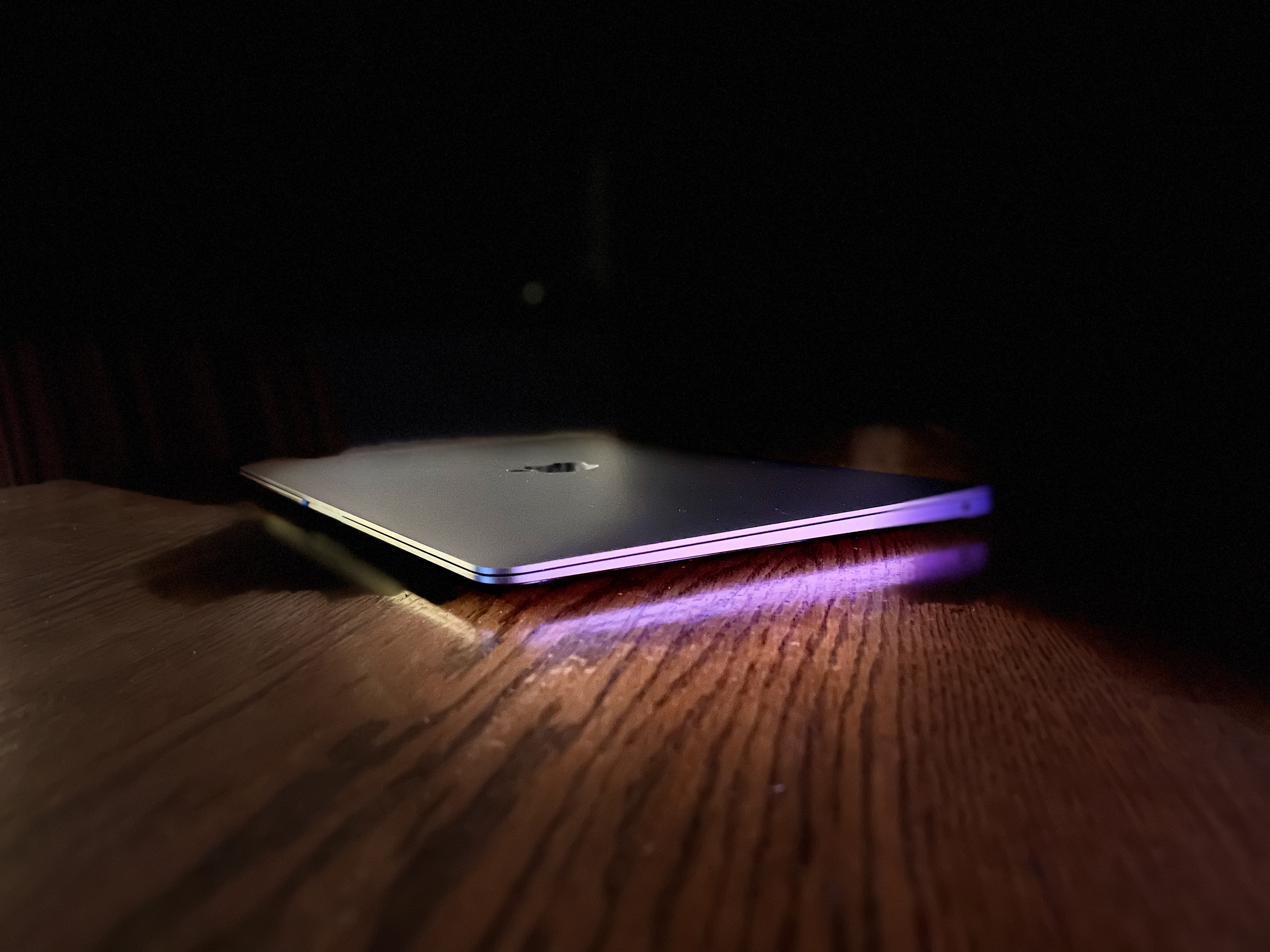
Photo: Leander Kahney/Cult of Mac
There’s no way to tell this is a new MacBook Air from the outside. The M1 model sports the same wedge-shaped design we all know and love, which still slips nicely inside a Manila envelope, just like the original. It measures just 0.16 inches at its thinnest point and 0.63 inches at its thickest point, and it weighs just 2.8 pounds. The same gold, silver and space gray color options are available, and you get a 30W USB-C power adapter in the box, just like before. Aside from the M1 chip, the only other changes from the previous model are Wi-Fi 6 and a better screen that can display a wider range of colors.
Buying an M1 MacBook Air is a lot simpler than it used to be. All models are powered by the M1 chip — you don’t have to choose between different Intel chips anymore — and there are just two standard configurations to choose from. The most affordable offers a 256GB SSD for $999; the other bumps storage to 512GB for $1,249. Both have 8GB of RAM. You can order extra RAM, which maxes out at 16GB in all M1 machines, and it’s possible to add up to 2TB of storage. I’ve been testing the 16GB RAM/512GB SSD version, which costs $1,450.
Other features include two Thunderbolt ports, a gorgeous 13-inch Retina display with True Tone, a brilliant Magic Keyboard, and a trusty Touch ID sensor. The M1 MacBook Air is the first that boasts a completely silent design. It is passively cooled, which means it has no fan, and yet it stays cool no matter how hard you push it. That’s a terrific change for anyone who likes to work in silence.
The M1 chip
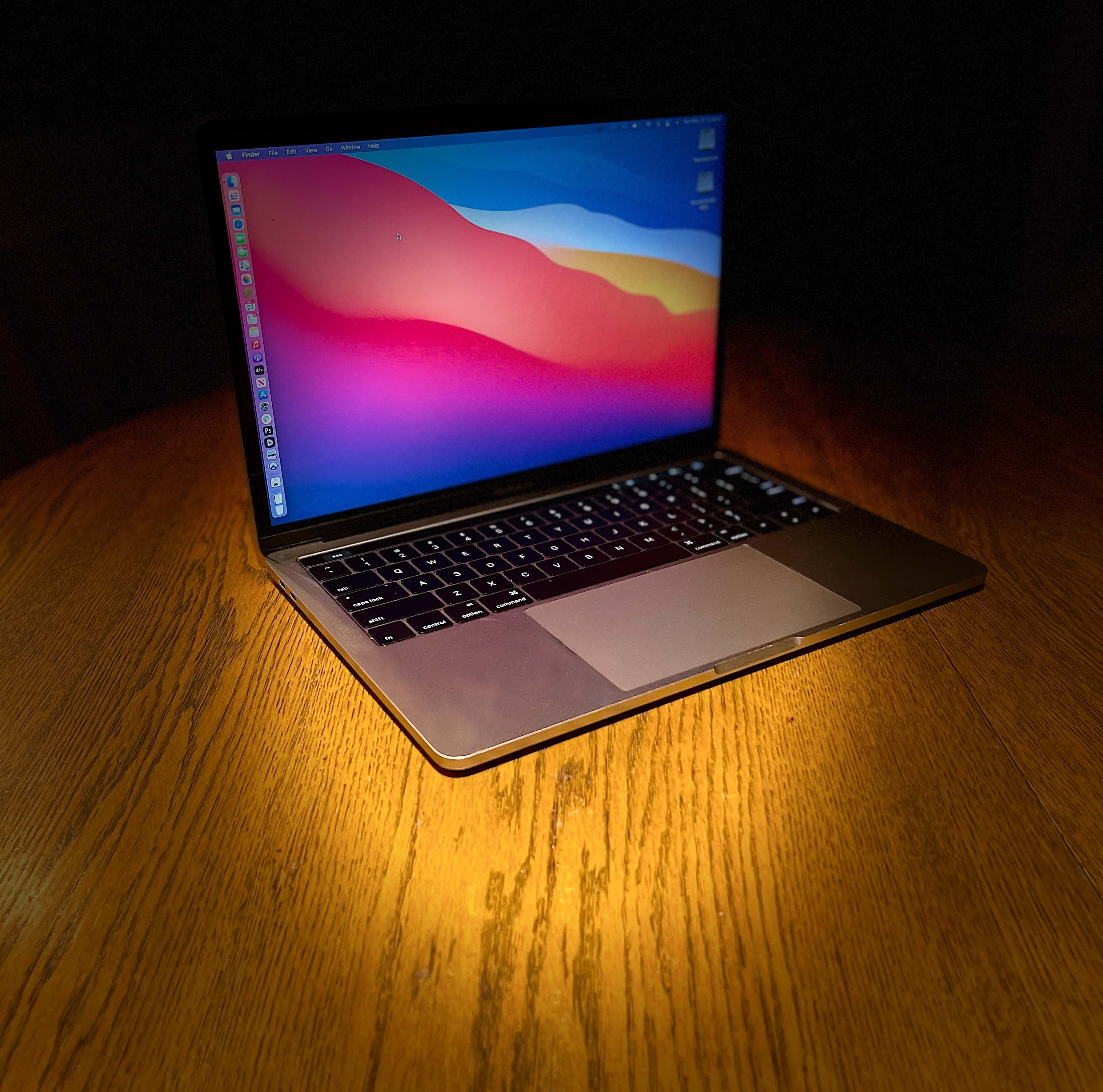
Photo: Leander Kahney/Cult of Mac
The best reason to buy a new MacBook Air is, of course, the M1 chip. It’s Apple’s first custom chipset for Mac, and the first computer chip built using the latest 5-nanometer manufacturing process. It’s an amazing feat of engineering, with a whopping 16 billion transistors. The M1 features an 8-core CPU, an 8-core GPU and a 16-core Neural Engine for optimizing machine learning. (Note: The entry-level MacBook Air only utilizes seven of the GPU’s eight cores.)
And it doesn’t stop there. M1 also features Apple’s new unified memory architecture, or UMA. The UMA puts high-bandwidth, low-latency memory together into a single pool so that all of the technologies baked into the M1 can access the same data without having to copy it between multiple memory pools. The UMA dramatically improves performance and power efficiency, Apple says. So although 16GB of maximum RAM may not seem like a lot, you’ll be surprised how far it goes. We’ve already seen what Apple can do with smaller memory capacities on iPhone (compared to rival Android devices), and now it’s doing the same on Mac. All these things help make the M1 significantly faster than rival mobile chips (and even most desktop chips). Apple says the new MacBook Air delivers 3.5x faster CPU performance and up to 2x faster graphics. And despite all that, battery life is better than ever.
Running old Intel apps
Perhaps the biggest issue with the new M1 chips is compatibility with old Intel apps, which at this point, is the vast majority of Mac apps. New M1 Macs run Intel apps using Rosetta 2, which converts the code on the fly. The original Rosetta did the same thing during the PowerPC-to-Intel transition.
So far, it’s been working like a champ. I installed Adobe Photoshop, Zoom, Slack, Dashlane password manager, TweetDeck and Microsoft Word and Excel. I also installed a new version of Google Chrome written for the M1 architecture, and have been running some of Apple’s apps that have been rewritten for the M1 also.
So far, they’ve all been running almost flawlessly. Aside from a weird freeze during the initial setup (while adding a credit card to Apple Pay), I’ve yet to experience any crashes, slowdowns or unexpected freezes. I’ve also had no installation errors, which others have reported.
Saying that, some other early testers have reported problems. Reviewing the new M1 MacBook Pro for Forbes, Patrick Moorhead encountered several software problems, and linked to a running list of apps incompatible with Rosetta 2. This is perhaps the one big caveat for the new M1: If there’s an Intel app you need and can’t find an alternative, best to check the list and keep an eye on the app’s developer for an update.
What about Windows?
One big missing piece of software is Microsoft’s Windows. Thanks to the new architecture, M1 Macs will no longer run Windows natively like Intel-based Macs. So no Boot Camp and no dual boot. But it will run Windows in emulation. (Reports on Twitter say that works pretty well.) There’s also an ARM version of Windows that one day may be retooled to run on Apple hardware, but don’t hold your breath. Meanwhile, CrossOver allows Apple’s newest machines to run Windows apps, and reportedly does it brilliantly.
iPhone and iPad apps
One of the big selling points of the M1 is the ability to run iPhone and iPad apps on these new Macs. In the Mac App Store, iOS/iPadOS apps appear in their own tab in search results. Once installed, they run in their own small window, and are controlled using the keyboard and trackpad instead of your fingers. I haven’t had a chance to download many of the hundreds of iOS and iPadOS apps and games available, and I had trouble finding the ones I did want, like Instagram. I did, however, play a couple of Apple Arcade games, including Super Stickman Golf 2 and Among Us! Both played flawlessly and looked great.
What it’s like to use
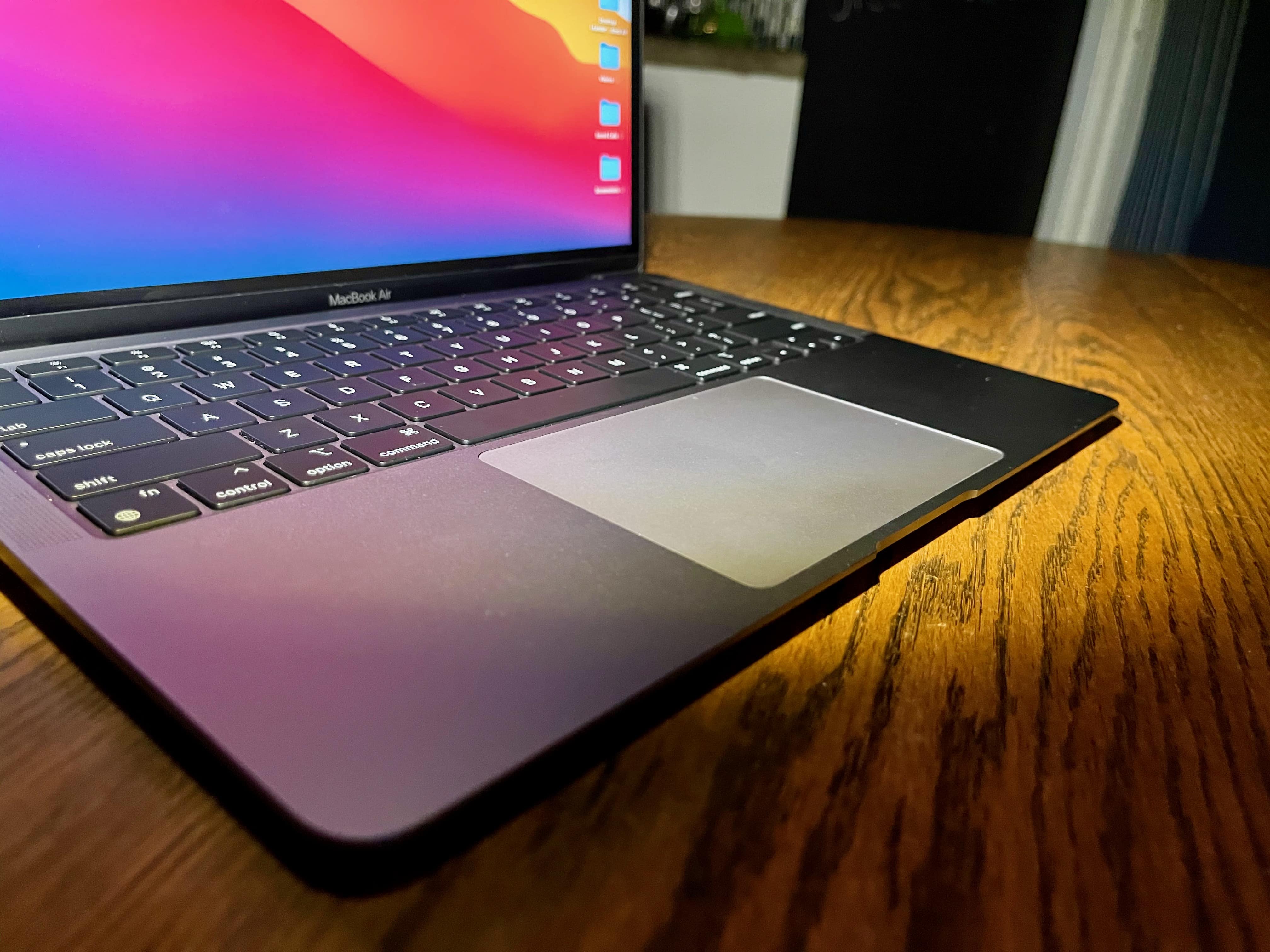
Photo: Leander Kahney/Cult of Mac
Thanks to that M1 chip, the MacBook Air wakes up immediately, ready for action the minute you press the Touch ID sensor. (The older Intel MacBook Pro wakes up about as fast as I do, which is not fast.) The keyboard is the old scissor-switch-style, which replaces the much-hated butterfly design. In the past, I’ve misguidedly defended the butterfly keyboard, and it’s just now that I realize how much I like the older design. I’m glad to see it back. There’s better travel on the keys, and they don’t bash your fingertips like the flatter butterfly keys. The Air keyboard feels roomy and expansive, and the backlight makes it really easy to use in the dark.
There’s no Touch Bar on the Air, and TBH, I don’t miss it much. Touch ID works as expected — flawlessly. The Force Touch trackpad is huge and works great. It has a nice, gentle click, which is purely perceptive. The “click” is generated by a Haptic Engine. The actual trackpad doesn’t move at all. The Air’s built-in speakers are fantastic. They can really pump the jams.
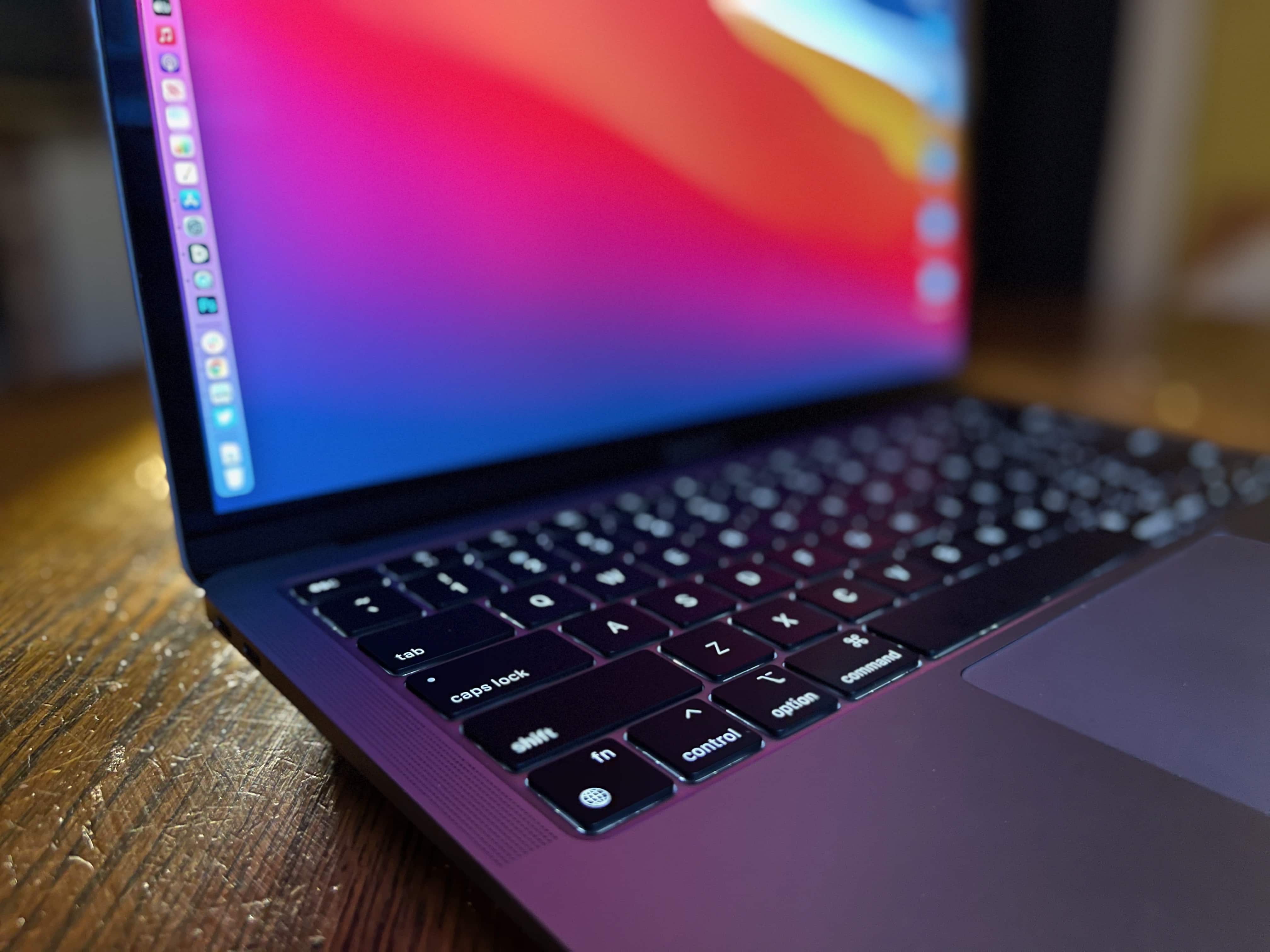
Photo: Leander Kahney/Cult of Mac
Benchmarks
I didn’t run any benchmarks. They’ve already been covered to death. Nonetheless, benchmarks show the new M1-equipped Macs are faster than most Macs that use Intel chips. Even the Air, the lowliest MacBook in Apple’s own lineup, beats every other mobile CPU on the market. One YouTube reviewer was so surprised by the benchmarks, he flat out didn’t believe them.
The downsides
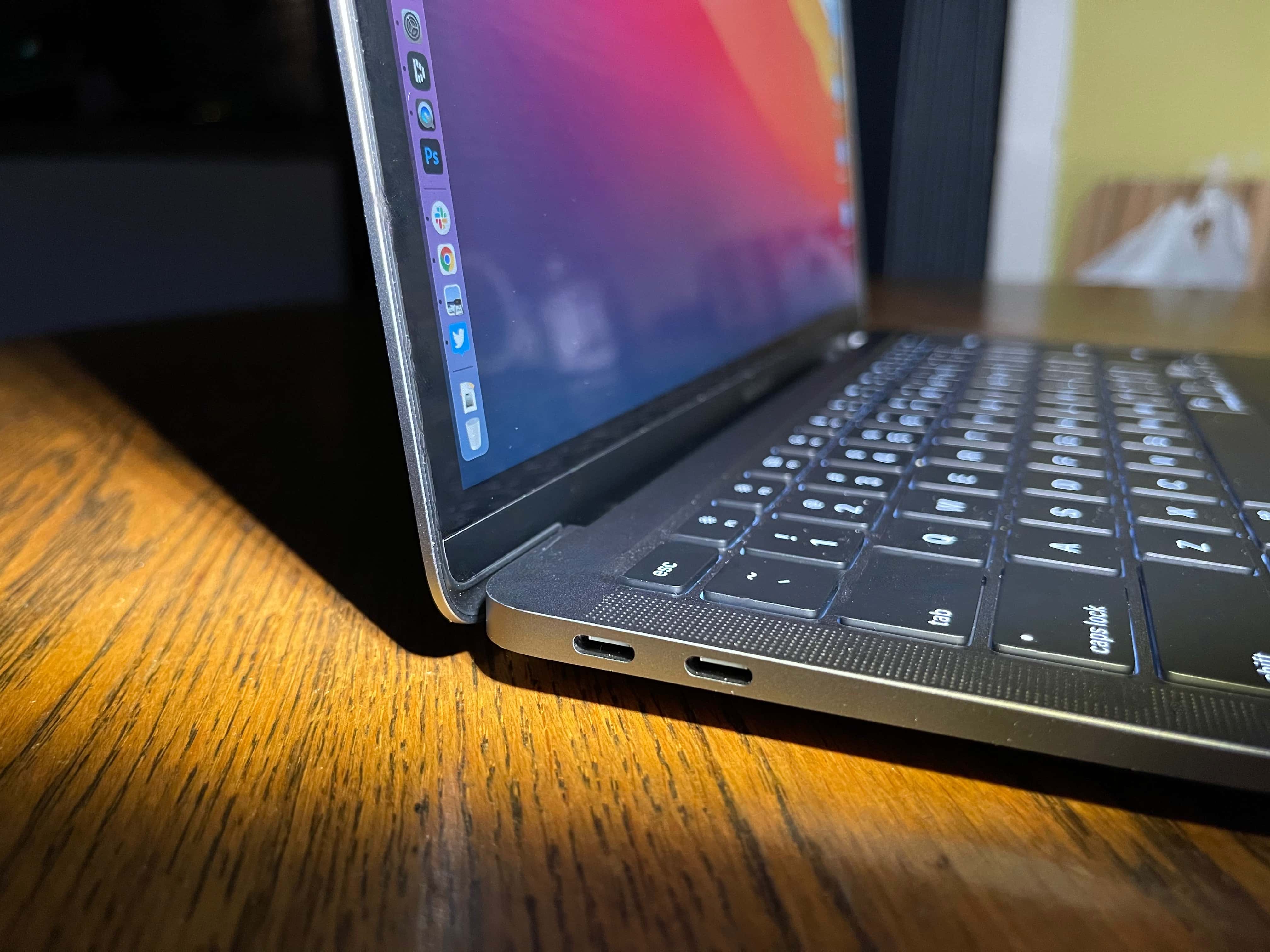
Photo: Leander Kahney/Cult of Mac
There are a few minor disappointments, however. The new M1 Macs will only support one external monitor, not two or more like previous MacBooks. And, like previous MacBooks, the new Air has a webcam that maxes out at 720p resolution, which is positively archaic given today’s webcam standards and the fact we live in a Zoom world. Apple says the M1 chip will upgrade the image, but I didn’t notice that it was spectacularly better. Perhaps in low light it was better. I use the webcam only for the occasional Zoom call, and it’s not a high-priority feature for me, but if you want a better webcam, get an external one.
One thing I do miss is Face ID, which I would love to see make its way to the Mac. Perhaps it will debut on some future iMac or MacBook Pro. For now, Touch ID will suffice. I do love it for logging in, filling in passwords and approving system updates. But Face ID would be better.
And there are only two Thunderbolt/USB 4 ports. The lack of ports drives some people absolutely batty, especially when one port is used for charging. I have a Satechi USB-C multiport adapter, which sports a couple of USB ports, two card readers and HDMI. Yeah, it’s something extra to carry, but it lives in my backpack and is readily available when I need to plug stuff in. For the most part, I don’t plug stuff in. I rarely need dongles. But if you do use external peripherals, the Air’s lack of ports is something to be aware of.
Conclusion

Photo: Leander Kahney/Cult of Mac
The new M1 MacBook Air is classic Apple. It’s a great computer at a fair price. It’s not the cheapest laptop by a long shot, but this machine will last for years. My son is still using an older Intel-based MacBook Air from 2012.
The M1 Air is a great laptop. Powerful performance. Long battery life. Completely silent and cool. It’s the distillation of what Apple does best — democratizing technology. Bringing tech to the masses. It’s a great computer for most people. As I was playing with the Air over the weekend, I wondered to myself, is this a classic? Could it be up there with the best Macs ever made? It certainly feels like an instant classic. Even my cat loves it.
![M1 MacBook Air is an instant classic [Review] MacBook Air M1 2020](https://www.cultofmac.com/wp-content/uploads/2020/11/MacBook_Air_M1_back-1536x1152.jpeg)

